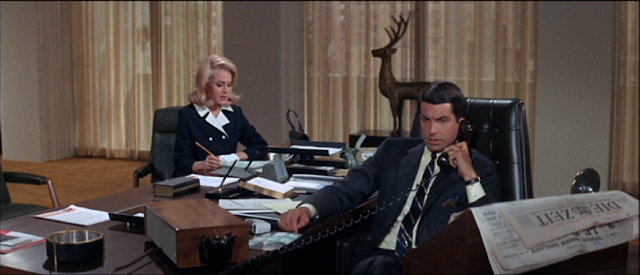by Eli Wallach
Mariner Books
320 pages/9 hours, 42 minutes
May 2006
My current enthusiasm for all things audiobooks has me seeking out every classic film related recording on Audible I can find. But that wasn’t enough. After listening to Dick Van Dyke’s audiobook Keep Moving, I wanted to hear more from the stars themselves. There is something very intimate about listening to a famous person tell you their story that you don’t get from just reading their words on the printed page. Having their voices transmitted right into your ear as they tell you story after story is an amplified experience. And for those stars who have shuffled off their mortal coil and left the world of the living, an audiobook recording of their memoir is as close to them as we can get.
Eli Wallach has been a favorite of mine for years. Not only did I admire his talent and devotion to his craft, he always struck me as a genuine and quirky kind of a guy. (Did you know Wallach collected antique clocks? ) Wallach was lovable and charming even when he so effortlessly played villains on screen. In his 2006 memoir The Good, the Bad and Me: In my Anecdotage, Wallach takes us on a journey through his life and career. We start with his early years as a Jewish kid growing up in Brooklyn and we follow him as he finds his calling as an actor, goes to college in Texas, serves in the medical corps during WWII and meets the love of his life Anne Jackson. He even tells us how he learned about the birds and the bees in the most frank yet lovable way. Wallach’s narrative slows as he relates the details of his theater and film work. There is much here about his training as a method actor as well as the differences between acting for theater and acting for film. Wallach loved the immediate gratification of working on stage but was also lured by the rich rewards, fame and money, of film work. He shares lots of behind-the-scenes stories and reflects on his past experience with all the wisdom and self-reflection that comes with living a long life.
Classic film fans will love hearing anecdotes about Wallach’s movie work. He shares a lot of stories about The Good, the Bad and the Ugly (1966) , the film that inspired his memoir’s title, The Misfits (1961), The Magnificent Seven (1960), How to Steal A Million (1966) and his first film Baby Doll (1956) . Audiences will love to hear his stories about notable figures including Marilyn Monroe, Sergio Leone, Clark Gable, Audrey Hepburn, Elia Kazan, Tennessee Williams and more.
Wallach was a charming storyteller and it’s easy to be captivated by him in this book. His voice demonstrated the wear and tear of old age but there is still a magic that comes from listening to the man himself tell his own story. You can almost see the twinkle in his eye as you listen to his words. Besides the many stories about his film work, I was particularly taken with his reflections on his home life. Wallach explains the complexities and challenges that come with being married to an another actor and raising small children. Wallach and Jackson struggled yet found balance in their work and marriage. They highly respected each other’s careers and although Wallach was the bigger star he made sure not to neglect her acting work. Wallach lovingly remembers the births of each of his three children and I particularly love the anecdote of him heating up milk bottles while pretending he was Louis Pasteur.
 |
| Eli Wallach and Anne Jackson (source) |
Even though I already owned a paperback copy of The Good, the Bad and Me, I’m glad I invested in the audio version. If you enjoy Wallach’s films and appreciate him as a person, listening to this audiobook will be a special treat. If you’re like me, you’ll find yourself tearing up when the book is over. And as an added bonus, Anne Jackson makes a small cameo in the recording.
I purchased this book at Audible. It seems to be the only place online where you can find it. The original audiobook recording is most likely out of print.





























